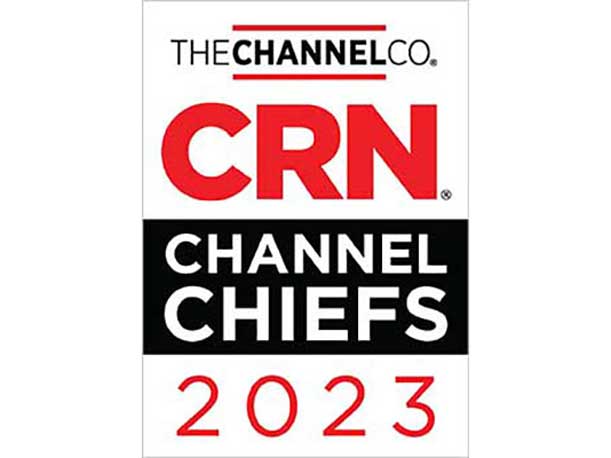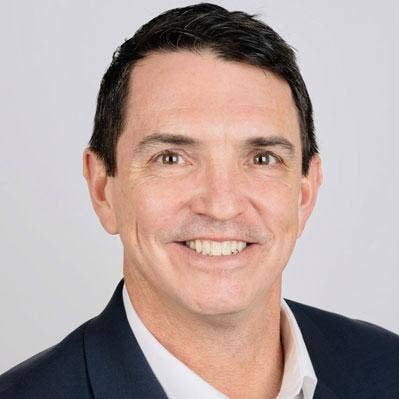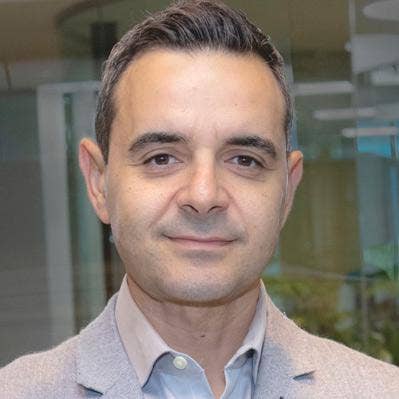Here’s What 20 Channel Chiefs Have To Say About ‘Metals-Based’ Partner Programs
Channel executives on the CRN 2023 Channel Chiefs list were asked for their opinion on traditional tiered ‘metal-based’ partner programs. Are they effective in today’s channel ecosystem? Here’s what 20 channel chiefs had to say.

Forging An Effective Partner Program
Since the early days of the IT industry and the channel, vendors have traditionally structured their partner programs in tiers, often designated bronze, silver, gold, platinum or some other valuable metal.
But are these “metals-based” partner programs—originally designed for resellers and based on sales volumes—still suitable for today’s fast-evolving channel with its wide variety of partner types and go-to-market models? Or is it time to develop more of a channel ecosystem approach toward channel management ?
As part of the CRN Channel Chiefs 2023 project, we asked the nearly 600 channel executives that made the list to tell us their opinion of/position on metals-based partner programs. Here’s what 20 had to say.

Cradlepoint
Lisa Wight
VP, Global Partner Programs, Worldwide Distribution
Metals-based partner programs provide simplicity and ease for new and up-and-coming vendor programs. As business for business continues, and as partners sell to customers the way the customer wants to consume, partner program inclusivity and flexibility around rewarding robust and loyal partners will be critical. Point-based systems, should a vendor move in that direction, will need to be simple to understand and manage while rewarding loyal partners, allowing for partners to differentiate around GTM and capabilities.

Deepwatch
Lori Cornmesser
SVP, Global Channel, Alliance Sales
The traditional program still works depending where you are in your evolution of partnering. For more advanced models, especially in cloud and SaaS, a different approach is required to drive behaviors outside of the standard method.

Eaton
Steve Loeb
VP, Distributed Infrastructure Sales
Quite honestly, I believe there is value in a common structure around tier-based levels within a program. However, no system or program is perfect as they tend to leave out large portions of the market/channel from consideration and/or have too high of a threshold for entry for new partners. Ecosystem or product-breadth programs are intriguing as they focus on a solution-oriented partnering approach versus rewards for dollars sold in general. Given the focus of channel over recent years toward solutions versus products, I believe an ecosystem-based program aligns better to our channel partners’ GTM and support needs.

Exabeam
Ted Plumis
SVP, Channels, Strategic GTM Alliances
I believe metals-based programs were designed at a much different time in the evolution of channel go-to-market strategies. Many of these programs reward partners for scale (number of certifications, sales volume, etc.), which means some partners will be unable to reach top status simply due to their market size (regional vs. national) or their account focus (vertical vs. horizontal sales).
My opinion is that partner programs should be more focused on two things. At the partner level they should focus on the value partners add within our account and prospect base (csat [customer satisfaction], renewal rates, managed and deployment services, upsell, new logo acquisition, etc.). And at the Individual rep/SE [sales engineer] level we should reward engagement with Exabeam (sales or technical capabilities, account engagement, promotion via social media, etc.).
A highly engaged sales rep or SE at a smaller partner should get benefits commensurate with their efforts regardless of partner size.

Extreme Networks
Scott Peterson
SVP, Global Channels
Metals-based partner programs were a fit for a different time and place. However, market conditions have changed and the number and variety of solutions that channel partners sell have rapidly expanded. Additionally, these metals-based programs can fail to recognize partners that are shifting to subscription-based sales models and other opportunities for recurring revenue. Vendors in the industry need to ensure our partners are fully supported to successfully deliver solutions to their customers and we need to evolve our partner program approach in order to accurately do so.

Imperva
Jessica Couto
VP, Americas
I often find that tiered systems can be complex, in particular when an early stage startup vendor is in the early stages of selling through the channel. Tiered systems are helpful when there are several partners bringing different values to a vendor yet deserve to have an advantage on an opportunity they bring to the table. Also, tiered programs are also helpful in rewarding those partners who have invested a large amount of time and resources to manage the full sales cycle, deliver the services, or both, which is experienced by longtime vendors.

Lansweeper
Christina Klein
VP, Global Channel Partners
For vendors to efficiently manage a large ecosystem of partners, it’s important to understand where to invest time and resources into those partners. A metals-based tiering system allows vendors to do that while also paving a clear path to success and growth for channel partners.
With that said, it’s important to also create an ecosystem where partners collaborate with other partners for mutual success. At Lansweeper, we work with ISVs on integrations, OEMs on embedded technologies, and channel partners. This ecosystem creates fluidity and availability through partners for our end customers, wherever they seek to find us.

Lenovo
Rob Cato
VP, North America Channel, ISO
Metals-based programs are normally straightforward and easy to articulate and convey to partners and for partners to share with their customers. It’s easy to include elements of the partners’ complete value-add in a metals-based structure, making conversations easier for the partner and thus improving their ease of doing business.

Logitech
Crystal Ferreira
Channel Chief, Global Head of B2B Channel, Alliances
If you want a program that is strictly based on productivity, tiers are a good way to incentivize and rank partners. But the role of the partner continues to evolve and as the world has become more complex and omnichannel-dependent, a niche partner focusing on a particular vertical or a non-transacting partner can be just as important as a large-volume seller. I believe it is important to give the partner a choice of how they want to partner with you based upon their specific business model. Rewarding partners based on specializations and the role that they play in the sales motion allows for flexibility and choice that can drive the desired behaviors to accelerate growth, improve customer experience, and meet the partners’ profitability needs to ensure loyalty from your partners large or small.

New Relic
Riya Shanmugam
Group VP, Global Alliances, Channels
Humans are naturally wired towards goals. There will always exist a scale of the best-performing partners, the good partners, and the entry-level partners. Partner tiers provide that predictability for partners to gain benefits as they scale their performance and profitability by achieving goals.
However, as vendors like New Relic look to drive more than just transactions (like we’re aiming to drive consumption and offer partner-led services), vendors may at times place big bets on more strategic partners that have yet to achieve the tiered model goals. If a partner has high-growth potential, is multi-layered and can be vendor-loyal to focus on sourcing, managing and servicing customers—why wouldn’t a vendor want to on-board them with up-front rewards to accelerate revenue and grow consumption and product adoption?
Regardless of partner type, an incentive-based mindset will always exist and New Relic will continue to reward partners on their overall value they bring to our business, and more importantly, our customers.

Nutanix
Christian Goffi
VP, Americas Channel Sales
For decades, we’ve known certifications do not drive results—competencies do. The modern partner program should be based on a firm’s ability to be influential and effective in front of its customers. The challenge is that some criteria tend to be subjective, which makes measurement at a macro level more difficult. The vendors that figure it out will have a distinct advantage over those that lag.

Okta
Bill Hustad
SVP, Partners, Alliances
I think there is value there, but the key focus areas should move beyond just found and transacted as the core elements. We are rationalizing our program to allow value and contribution across the partner motions (potentially via points and/or badging system) to move partners across the tiers. Each tier opens a set of benefits. These benefits will go well beyond discounting. They will focus on rebates, reinvestment back into building the Okta partnership, and monetary rewards.

Pegasystems
Judy Buchholz
SVP, Global Partner Ecosystem
While metals-based programs feel familiar and on the surface are easy to understand because of our familiarity through airline programs, it doesn’t provide the market with insight into what the partner has achieved that is of value to the client. Specialization or partner-specific activity tracks are clear indicators to the clients and the vendor ecosystem what the partner has to achieved or is focused on as their key differentiator with the vendor.
Metals programs have historically been more vendor-specific with many leaning heavily into the sales elements of the relationship. They have not typically leaned into client outcomes as part of the measure. Where they have the differentiation is not well noted for the market to understand. The overall design of partner programs, whether metal-based or specialized, has to evolve to focus on client outcomes rather than a historical record of the metrics or the top of the maturity curve activity with the partner that may or may not drive the outcomes.

PTC
Stuart Heavyside
Channel Chief
With any partner program, you want to make sure partners can easily understand how they can maximize their earnings and gain incremental benefits. Simplicity and aligning on shared goals are key.

Pure Storage
Gary Matson
VP, Worldwide Partner Go-To-Market, Programs
Partner programs will continue to evolve as the lines between different types of partners and how to best to address them blur and shift. Our philosophy has always been to consider partner capability and investment as the priority over volume. What we’re thinking about now is how to best reward, incentivize and enable partners in relation to what it is we would like them to focus on and invest in and how to align that with our products/solutions and the customer outcomes we are striving to address.

Rapid7
Alex Page
Global VP, Channel, Alliances
One primary guiding principle of metals-based partner programs is the ability to reward partners who are meeting/exceeding expectations on the outcomes you’ve deemed important to the partnership. At its core, that is akin to any well-constructed compensation plan for sales/CSM [customer success management]. Driving the behavior you want, clearly and fairly, through incentives will always be valuable in that it reduces the burden put on your leadership to drive and motivate the right behaviors and outcomes that matter. Is the metals-based structure perfect? Probably not. When it clearly ties to what matters to you in the partnership and it’s fair, does it work? Yes.

SentinelOne
Ken Marks
VP, Global Channels
Designation of a partner’s investment in building a vendor practice is still an important factor in the benefits they receive. I do believe tiers should not be based solely on revenue, but a combination of skills required to build a functioning and profitable practice around the vendor’s solutions

Veeam
Kevin Rooney
VP, Americas Channel Sales
I believe the metals-based partner programs will continue to evolve. While we may modify the terminology or how we identify the tiers, we will still differentiate our partners based on their capabilities to deliver our solutions and our services.

Vertiv
Peter Klanian
SVP, North America Sales
While I don’t believe there is a major problem with a metals-based program, I do believe the industry is ready for innovation and it’s always good to consider new approaches.

Workday
Sam Alkharrat
Chief Partner Officer
A tiering-based approach is the backbone of a forward-thinking partner program. Having clear, public and metric-based measures to highlight the contributions of a partner is vital to customer experience. A tiering-based approach can ensure that high performance and competency is rewarded, while providing a growth path for all of Workday’s partners.
However, a pure tiering-based approach falls short of the level of differentiation that our partners and customers desire. We see a world where a tiering approach can be complemented with designations and badging that are personalized to the demands by the customer base, especially where technology and industry expertise intersect.